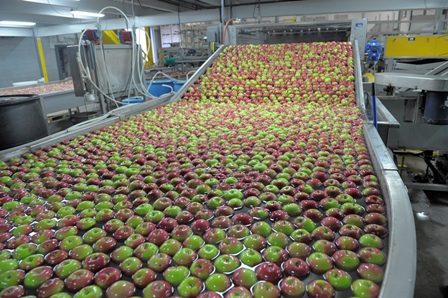How Apples Are Grown
September 01, 2015
Have you ever wondered where those perfectly shaped apples we all love come from? Yes, they grow on trees – and here’s exactly what happens:
Farmers buy young nursery trees and plant them in their orchards. 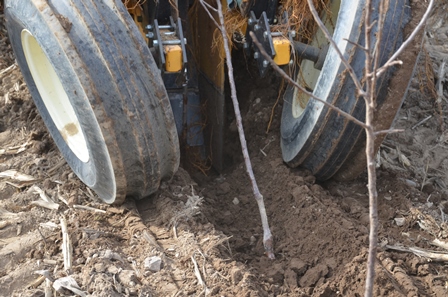
They carefully care for their young trees for several years before they have grown enough to start producing fruit.
A tree guard around the base helps protect the trunk of the young tree, as you can see in the photo here.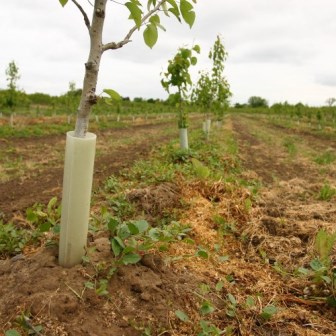
Farmers train and prune their fruit trees regularly to make sure that they grow properly.
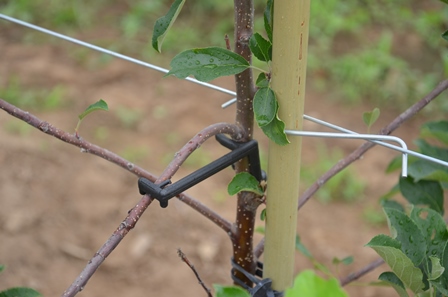 Training the trees (photo on the left) means positioning the limbs so they can hold more fruit.
Training the trees (photo on the left) means positioning the limbs so they can hold more fruit.
 Pruning is done by hand so that branches are spaced properly to capture the most sunlight (the more sunlight, the better the apple quality and taste) and have strong structure to carry large numbers of apples.
Pruning is done by hand so that branches are spaced properly to capture the most sunlight (the more sunlight, the better the apple quality and taste) and have strong structure to carry large numbers of apples.
Pruning is usually done in early spring before the trees start growing again.
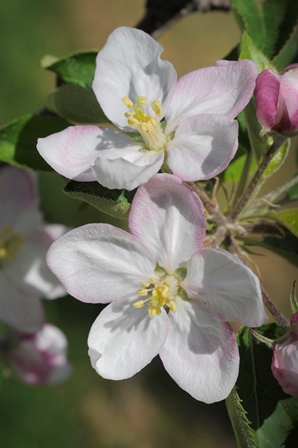 In the spring, fruit trees flower. Seeing an orchard in full bloom is a beautiful sight – and a sure sign of spring!
In the spring, fruit trees flower. Seeing an orchard in full bloom is a beautiful sight – and a sure sign of spring!
It's during blossom season that pollination occurs. This is the transfer of plant pollen from a plant's male reproductive organs to its female reproductive organs to form seeds. This is how the fruit starts to grow from the blossom. Pollination usually happens by insects, like bees.
Once pollination has taken place, the blossom dries up and the fruitlet begins to form. Apples are very small and very green when they first start emerging.
As they continue to grow throughout the spring and into summer, the fruitlets start to take on the shapes and colours most of us will recognize from the grocery store.
Most farmers, both organic and conventional, need to protect their crop from many insects, diseases and weeds.
This often includes some form of crop protection products which protect plants from pests that would otherwise hinder their growth or keep them from growing altogether.
Farmers have to monitor their orchards very carefully for any signs of pests or disease. It's hard for farmers to be able to sell blemished or under-sized fruit.
Large, well-shaped and unblemished fruit are preferred by consumers; those that don't make the grade will often end up in processed food products at a much lower price.
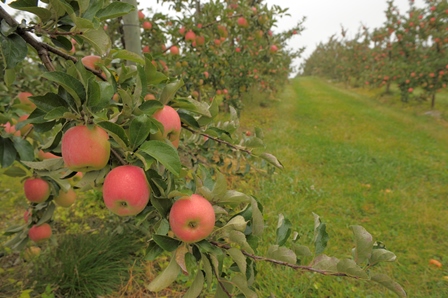 When apples are ripe, they are harvested either by workers on ladders or using mechanized harvesting platforms. The apples must be handled carefully so they don’t become bruised or damaged.
When apples are ripe, they are harvested either by workers on ladders or using mechanized harvesting platforms. The apples must be handled carefully so they don’t become bruised or damaged.
Once harvested, they are either packed and shipped right to market or put into 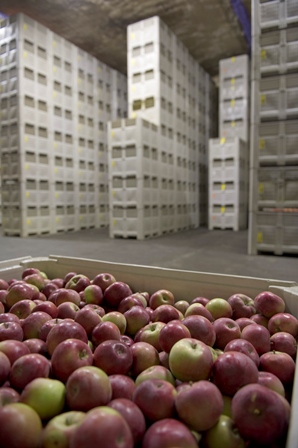 storage (see photo at right) so they can be enjoyed during the cold winter months.
storage (see photo at right) so they can be enjoyed during the cold winter months.
The apples are also graded – they get a grade based on their size, colour and quality which will determine how much an apple farmer is paid for his fruit.
This last photo shows apples being packed:
